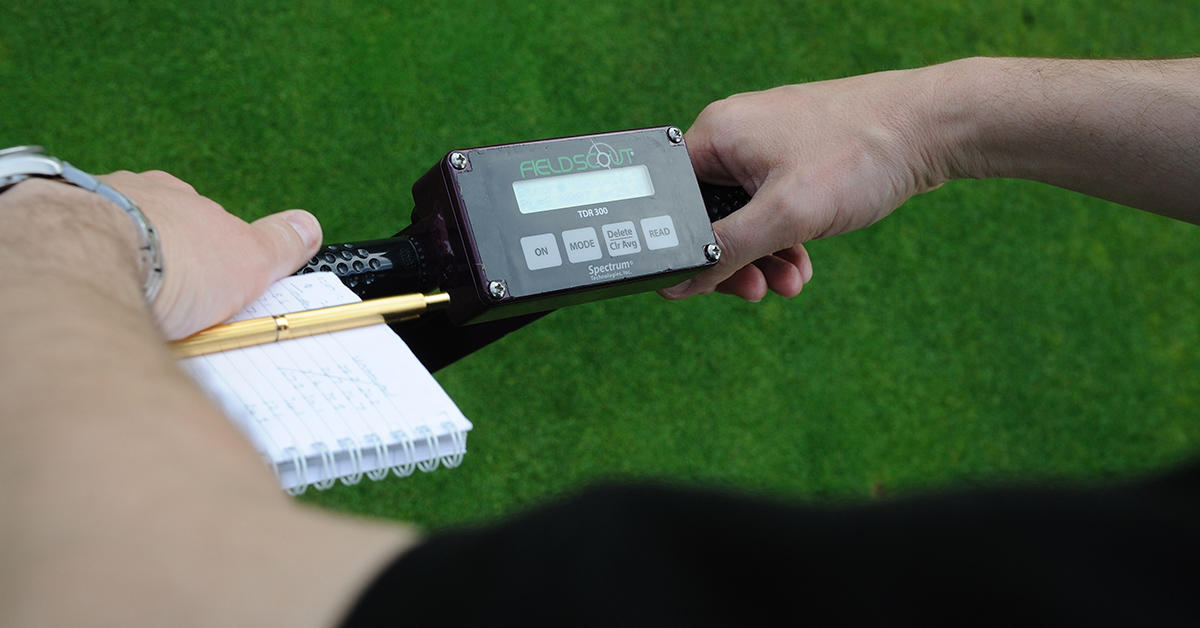- Homepage
- News and Features
- Plant growth regulator myths busted
Plant growth regulator myths busted

The use of plant growth regulators (PGR) to reduce the burden of mowing through a period of reduced staffing and social distancing has been a positive action, writes Syngenta Technical Manager, Glenn Kirby.
Repeated Primo Maxx trials, in the UK and around the world, have shown a typical reduction in mowing requirement and clipping yield of between 20% and 40%, depending on grass species and growing conditions. Alongside that, there have been the associated reductions in costs of mowing and machinery.
Furthermore, as one of the most intensively researched turf input products, its effects on plant physiology and turf quality have been rigorously investigated.
Can we increase rates to get longer PGR effects?
As Primo Maxx II naturally degrades in the environment, which influences its suppression of gibberellic acid thereby reducing leaf growth, doubling the rate of application will not simply double the duration of regulation.
Trials at Wisconsin University in the US indicate that there was a threshold for PGR effect, above which higher rates gave limited further reduction in grass growth on bentgrass greens.
The trial did show that with turf maintained at a longer height of cut – at six mm compared to three mm – there was a consistently greater level of regulation and a 50% greater response of more regulation from higher application rates. That could influence results on greens currently being maintained at higher cut levels, or for applications on fairway turf.
Regular application, such as fortnightly treatments as part of a programme, for example, has given the most consistent results, irrespective of the application rate. Research has shown there is more to be gained for consistent results and longevity by utilising effective intervals between applications, than by increasing the rates.

Will PGR effects be reduced as temperatures warm up?
The duration of Primo Maxx’s effect is influenced by plant metabolic activity, which is a factor of temperature, and other growth conditions. As conditions warm up for faster growth, product degradation is greater and trials have shown more frequent reapplication would normally be required.
Models for PGR reapplication focus on temperature – through Growing Degree Days (GDD) – but assume all other factors remain constant for growth. Whilst that is typically true for managed greens, for example, if other factors limit growth, such as lack of light, moisture or nutrition, then naturally occurring effects may influence required PGR timing.
That could also have an effect for less intensively managed surfaces being held until play can resume, or for fairway applications.
Does that change using GDD?
Research has shown that GDD can be a useful guide for PGR application interval ‑ providing any results are interpreted and applied according to individual course conditions. (See last month’s GI Insight ‑ GDD explained)
Whilst most models indicate a PGR interval of 150 to 200 GDD, that was typically generated in the US in different conditions and grass species to the UK, often using different calculation parameters. In reality, each course would have a slightly different optimal GDD for PGR reapplication in their situation. A new Syngenta GDD calculator ‑ providing data on more accurate hourly temperature changes, compared to simply maximum and minimum values – is set to provide an easy to use guide. It also has an informative predictive element, to forecast when elected GDD points are expected to be reached and enable more proactive decisions.
Do we still need to feed with PGR application?
Since most PGR applications are made along with the nutrition programme that would normally be sufficient. Where nutrition may have been cut back during closures this season, there may be some transient yellowing effects on plants from PGR application, particularly if started at higher rates, but this should soon be outgrown and no long lasting effects.
Will turf quality decline in the autumn from PGR use all summer?
Research by STRI has shown prolonged use of Primo Maxx has no negative effects on turf quality. Trials in the US have observed PGR use was effective in reducing the incidence of etiolated growth in some turf grass species.
Since the effect is regulating a naturally occurring process of gibberellic acid production in the plant, any changes in growth habit only occur whilst the active is present, and then gradually dissipate.
The only effect that may be seen is that when the Primo Maxx programme ends, the natural rebound effect has been noted to see greater compensatory gibberellic acid production. That can be effectively managed by the gradual withdrawal of PGR programmes, or as is increasingly practiced on greens, to maintain PGR use for longer in the autumn, albeit at lower rates and longer intervals.
Tags
Author

